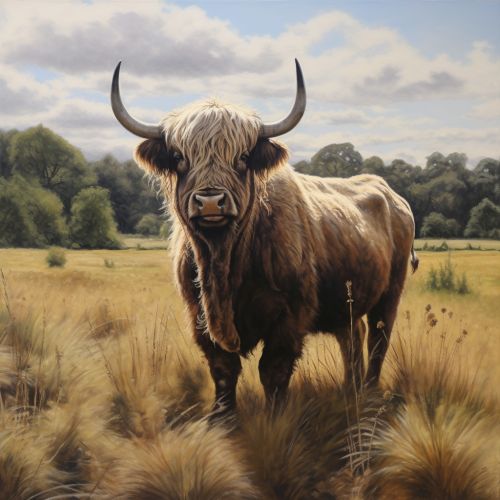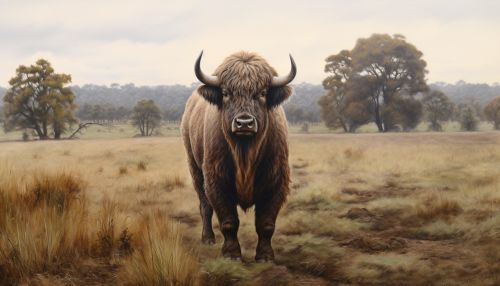Bison
Taxonomy and Evolution
The bison is a species of large, hoofed mammal classified under the genus Bison within the subfamily Bovinae. The genus Bison is part of the larger family Bovidae, which also includes other ruminants such as cattle, goats, and sheep. The bison's closest relatives within the Bovinae subfamily are the domestic cattle (Bos taurus) and the yaks (Bos grunniens).


The evolutionary history of the bison can be traced back to the Pleistocene epoch, approximately 2 million years ago. Fossil evidence suggests that the genus Bison originated in southern Asia before migrating to North America over the Bering land bridge. This migration resulted in the evolution of two distinct species: the American bison (Bison bison) and the European bison (Bison bonasus), also known as the wisent.
Anatomy and Physiology
Bison are notable for their large size, with males (bulls) typically larger than females (cows). Adult males can reach lengths of up to 3.8 meters from head to tail and stand 1.8 meters tall at the shoulder. They can weigh up to 1,000 kilograms, making them one of the largest terrestrial mammals in North America and Europe.
The bison's body is covered with a thick coat of hair, which varies in length and color depending on the season and the individual's age and sex. The coat is typically darker in males and lighter in females, and it becomes longer and shaggier during the winter months to provide insulation against the cold.
One of the most distinctive features of the bison is its large, muscular hump over the shoulders, which is more pronounced in males. This hump, along with the animal's strong neck muscles, enables the bison to plow through snow in search of food during the winter.
The bison's skull is massive and robust, equipped with a pair of sharp, curved horns that are used for defense and during mating competitions. The horns, present in both males and females, can grow up to 60 centimeters in length.
Behavior and Ecology
Bison are social animals, typically forming herds of 20 to 50 individuals. These herds are often segregated by sex, with separate groups of males and females that only come together during the mating season, known as the rut.
During the rut, male bison engage in intense battles for the right to mate with females. These battles involve charging and butting heads, with the larger and stronger males typically emerging victorious.
Bison are primarily grazers, feeding on a variety of grasses and sedges. They have a complex, four-chambered stomach that allows them to digest these tough plant materials more efficiently than many other herbivores.
Bison play a crucial role in their ecosystems, influencing the composition and diversity of plant and animal communities. Their grazing activities can promote the growth of certain plant species over others, while their wallowing behavior creates depressions in the ground that can serve as habitats for various invertebrates and small vertebrates.
Conservation
Bison populations have faced significant threats over the past few centuries, primarily due to overhunting and habitat loss. The American bison, in particular, was hunted to near extinction during the 19th century, with the population declining from an estimated 30 million to fewer than 1,000 individuals.
Conservation efforts have since been implemented to protect and restore bison populations. These efforts have included the establishment of protected areas, breeding programs, and reintroduction initiatives. As a result, the global bison population has increased to approximately 500,000 individuals, although the majority of these are found in commercial herds rather than in the wild.
Despite these conservation successes, bison populations continue to face threats from habitat fragmentation, disease, and genetic issues related to small population sizes. Ongoing conservation efforts are therefore crucial to ensure the long-term survival of this iconic species.
